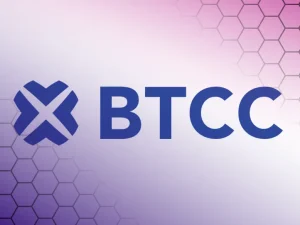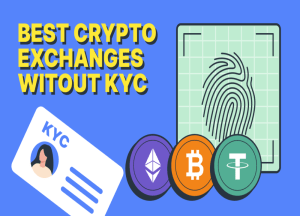Understanding Terra 2.0: Why LUNA Deserves a Second Chance
The collapse of the Terra ecosystem, and the tokens Luna and UST, will go down as one of the most painful and devastating chapters in crypto history.
While the overall crypto market has been bearish since earlier this year, the unprecedented collapse of the LUNA and UST stablecoins exceeded any expectations or predictions. Despite the many red flags in Terra’s algorithmic stablecoin concept, not many investors really expected the token to completely lose its value.
Why would they? LUNA was trading at $119 in early April and was the eighth largest cryptocurrency in the market. Since then, Terra’s native coin has lost 100% of its value, and its currently trading at $0.000064. The LUNA crash caused thousands of investors to lose millions, with some losing their entire life savings.
However, coming out of this crash, one of the positive experiences was that Terraform Labs didn’t abandon their project and the community. The blockchain’s founder and CEO Do Kwon launched Terra 2.0 as a part of LUNA’s revival plan. Terra 2.0 serves as a fork of the original Terra blockchain, as the original LUNA token is renamed Luna Classic (LUNC).
The developers will periodically airdrop the new LUNA token to crypto investors who previously held more than 10,000 tokens before the stablecoin crash. With the newly revived LUNA token trading just below $3.00, the big question is “should investors give Terra a second chance?” Although this is not financial advice, we do think that its isolation from the algorithmic stablecoin allows Terra 2.0 a larger landscape for future revival. Here’s why
How and why did LUNA collapse?
LUNA’s crash was largely caused by its link to TerraUSD (UST), an algorithmic stablecoin. While most stablecoins are pegged against a specific dollar value or equivalent currently reserved in centralised banks, the UST stablecoin maintained its value through algorithms and computer-generated codes. The process of maintaining the $1 price equilibrium included burning and minting LUNA/UST to maintain the price of these tokens.
For example, when 1 UST is minted, $1 worth of LUNA is burned and vice versa. Whenever UST starts losing its dollar peg, holders burn their stablecoin for LUNA, making UST gain profit and moving the price back to its peg.
However, during the bear market, a large amount of UST was dumped, causing the stablecoin to de-peg. This caused a ripple effect in an already downward market, driving more and more investors to sell and burn UST, thus minting more LUNA. This excessive mining led to a massive increase in LUNA’s circulating supply, thus crashing its price. The token’s circulating supply was around 345 million in April, which became 6.5 trillion on May 13th.
The revival plan of Terra 2.0
Following the massive crash, Terraform labs decided to revive the altcoin, but this time without any links to the algorithmic stablecoin. Developers launched a new Terra blockchain called Terra 2.0
The old Terra chain is renamed Terra Luna Classic. The new LUNA 2.0 has a total locked supply of 1.0 billion, which is significantly better than the 6.5 trillion supply of the classic token. 35% of the new tokens are airdropped to previous and existing LUNA holders. 10% of LUNA 2.0 is sent to those who held the token before the UST crash, and 25% is sent to those who still own LUNA Classic and UST. Another 30% is sent to a pool of LUNA investors.
Why Terra (LUNA) deserves another chance
While LUNA’s crash has significantly impacted the overall crypto industry and created worries for new entrants, we have to remember that it’s not an isolated event. Over the last few years, the crypto industry has seen its fair share of ups and downs. New tokens have emerged with glowing promise, only to fail miserably. Some due to project failures, some due to scams and rug pulls.
One of the positives in the LUNA case was the continuous efforts and commitments of the Terra team. The team worked tirelessly to support the community in this crisis and implement a revival plan that actually separates itself from the previous mistakes. Terra’s operations are still conducted within legal parameters.
Since 2019, LUNA’s achievement in the blockchain space has been extraordinary. The token had maintained consistent growth and correction even during the harshest of market conditions. The crypto community should value that Terra has admitted its mistakes, and the concept of Terra 2.0 shows that it has already started to move away from the previous flawed concept.
We are not saying that LUNA 2.0 will take off, because the algorithm value proposition massively contributed to LUNA’s growth over the years, even though the same aspect caused its eventual crash. Terra 2.0 might not have a new innovative concept, but it sticks to the basic fundamentals of crypto, which is what the community truly needs right now.
So while this is not a financial proposal, given the tremendous support and contributions of Terraform Labs and its commitment to the community, we do believe that giving Terra a second chance is worthwhile.
Read More:
After Terra Crash, Get Ready for the Era of Stablecoin
Terra-based Projects Begin migrating to Polygon 2 Months After UST Crash
How Terra’s Crash will Affect the Future of Stablecoin Regulation
Please be aware that all investments involve risk, including the potential loss of part or all of your invested capital. Past performance is not indicative of future results. You should ensure that you fully understand the risks involved and consider seeking independent professional advice suited to your individual circumstances before making any decision.
For any inquiries or feedback regarding this article, please contact us at: [email protected]










